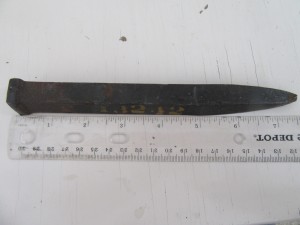 I acquired this pin in a box at an auction at an old rural hardware store. The pin is 7 1/2" long and is diamond shaped. The part # 13242 is stenciled on the side. Value? Any help on this would be appreciated.
I acquired this pin in a box at an auction at an old rural hardware store. The pin is 7 1/2" long and is diamond shaped. The part # 13242 is stenciled on the side. Value? Any help on this would be appreciated.
Thank you.
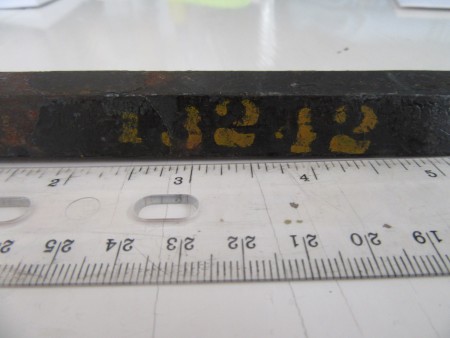
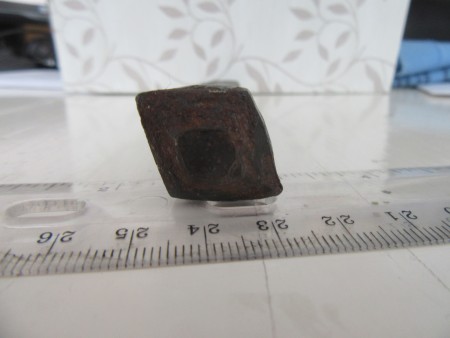
I think it's possible this is a reproduction of an antique building nail.
here is a link to some information on antique nails:
www.realorrepro.com/
This site has a link where you can ask your question and post pictures to a forum and they can probably provide the information you're looking for.
Ask a QuestionHere are the questions asked by community members. Read on to see the answers provided by the ThriftyFun community or ask a new question.
I found this with my metal detector on my property in NW Washington state. The area has been logged over the years. There were quite a few cedar stumps with notches in them.
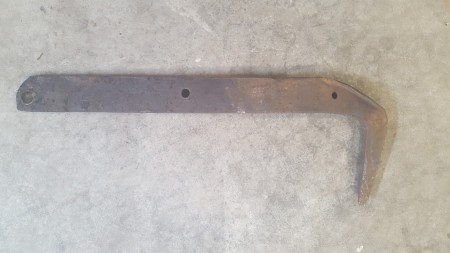
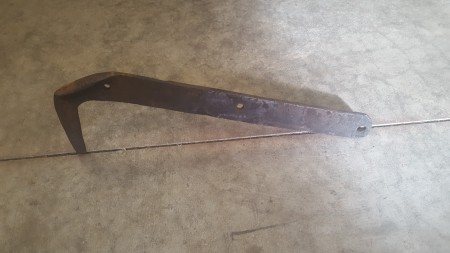
It does appear to be a tool for hooking logs or pulp.
I believe it could have had a wooden handle that was attached with bolts (through the holes) that allowed someone to hit the log and pull it toward them.
Here is a link to logging hooks on eBay and it seems most of them are similar to mine and have a loop handle.
www.ebay.ca/
Here is link to a forestry forum that answers questions about older items like this.
The registration form seems ridiculous but it's just a lot of questions and not bad once you get started. You will get an answer if you join.
Otherwise someone else will come along and maybe have an easy answer (maybe Pghgirl will post some ideas).
I need to know what this is for 25$. Please help me.
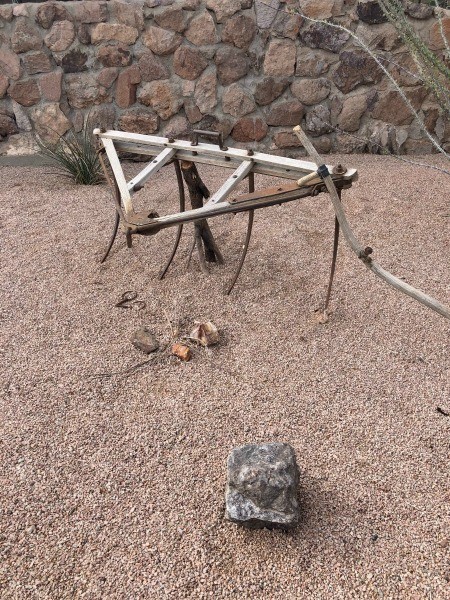
This is an old piece is a part of a antique Tiller/cultivator. It is used as a attachment that was pulled to grade and break up soil for gardening -www.ebay.com/
I believe you have a modified vintage tiller/rake that was pulled by a tractor as there is no seat for it to have been pulled by a horse or mule.
Many people do not know the different in a tiller and a cultivator.
Here is vintage cultivator:
www.alamy.com/
You can see from this old tiller how the tines are much closer together and almost straight so your picture looks like it was a handmade hay rake.
www.dreamstime.com/
Possibly a horsedrawn hayrack. The piece laying against it looks like a mowing scythe.
I know this photo has been on here a while but I wanted to share with you some information my husband found. There is a photo in Mother Earth News Feb./March magazine of an item that looks similar to the item in your photo. According to that article, the item is a cradle scythe. Here's a link to a photo online of a cradle scythe
What is this bracket and what was it used for?
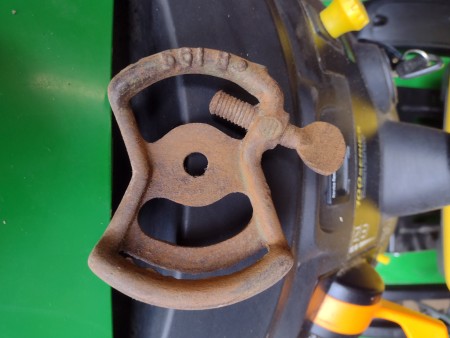
My husband and I found this antique motorized push yard roller when we bought our house. Still works, but we have no use for it.
Would like to make some money off it if possible, but not sure what amount to ask.

If you have an eBay account perform a search that will likely pull up similar items to yours. For example, search for "antique ryan roller" or something similar.
Then click "Follow this search" link and you can sent it up so that eBay will email you when items like yours are posted. You can create alerts for various search terms, like "antique roller" or whatever might help you determine your items value.
Then if something like your roller is post, follow the auction to see if it sells and what it sells for.

Any of your husbands loggers? We are looking at a skidder. If you can help we are looking for information on an International S-8 cable skidder with a funk powershift transmission. Thanks in advance.
I looked at one myself. Theyre a good working machine but if you have to work on the transmission your looking at big $$. Hard to find parts for too.
This is a page about identifying antique farm equipment. Many people really enjoy old farm equipment, whether to restore it or just display it. Do you have a piece you want to identify or do you know more about the equipment featured in this page?
Trying to identify an old piece of equipment completely out of its environment can be a daunting task. Internet searches and sharing photos on-line may help you discover its original use.